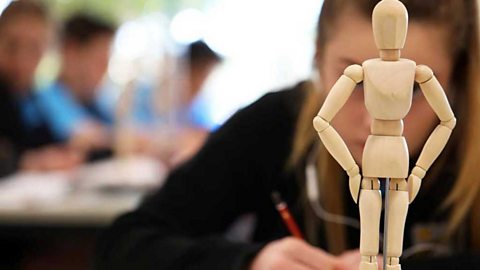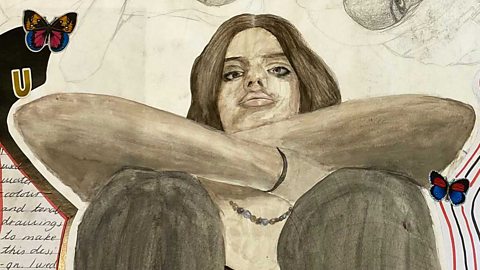Figure drawing
Proportions of the human figure

For a realistic drawing, draw the figure in proportion. Check the height, width and size of each part of the figure as you are drawing.
There are a number of rules to get the correct proportions for a person stood upright:
- the head fits into the height of the body between seven and eight times
- the belly button is around three heads down the figure
- the elbows are in line with the belly button
- the wrists should be in line with the top of the legs
Simplifying the figure into lines and shapes
Drawing a full figure can be made easier by starting with a stick figure:
- sketch vertical lines for the spine, arms and legs
- sketch horizontal lines for the shoulders, hips and feet
- draw an oval shape for the head
Foreshortening
Foreshortening creates the illusion of depth by making part of the subject bigger or smaller than in real life.
Click through the slideshow to see a student example of foreshortening:

Image caption, The student has drawn the legs and arms larger in relation to the head to create the illusion of depth
Image caption, The student used construction lines to get the perspective and focal point right
1 of 2
Realism versus abstract
Realism in observational drawing can be achieved by making shapes, proportions and details as accurate as possible. Tone should be added in a skilful way.
Realistic drawings avoid dark outlines or exaggerated shapes, whereas abstract drawings can experiment and play with outlines, edges, colours and shapes.
